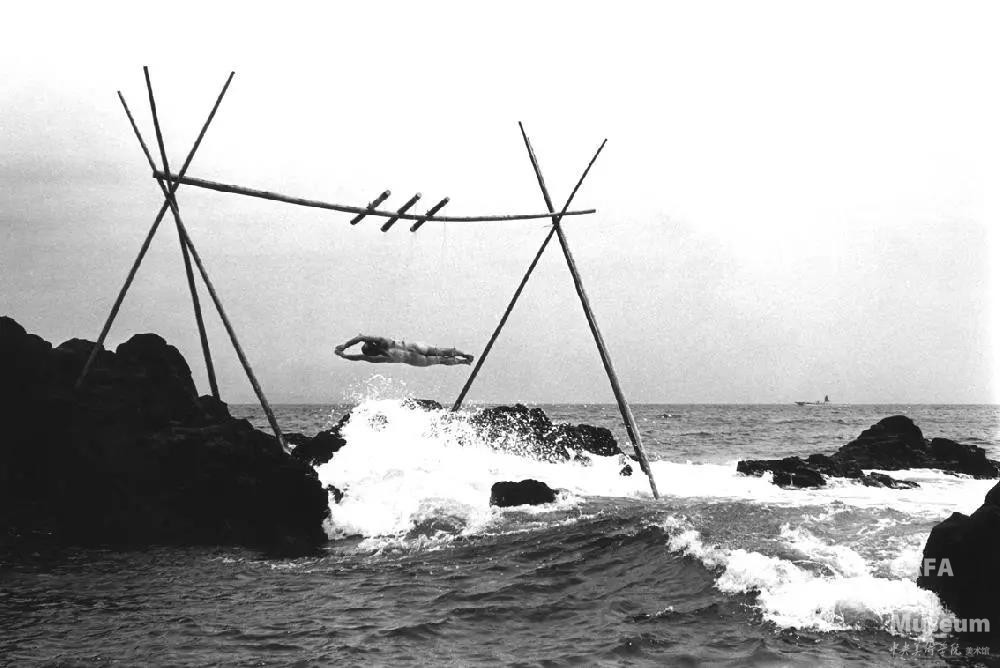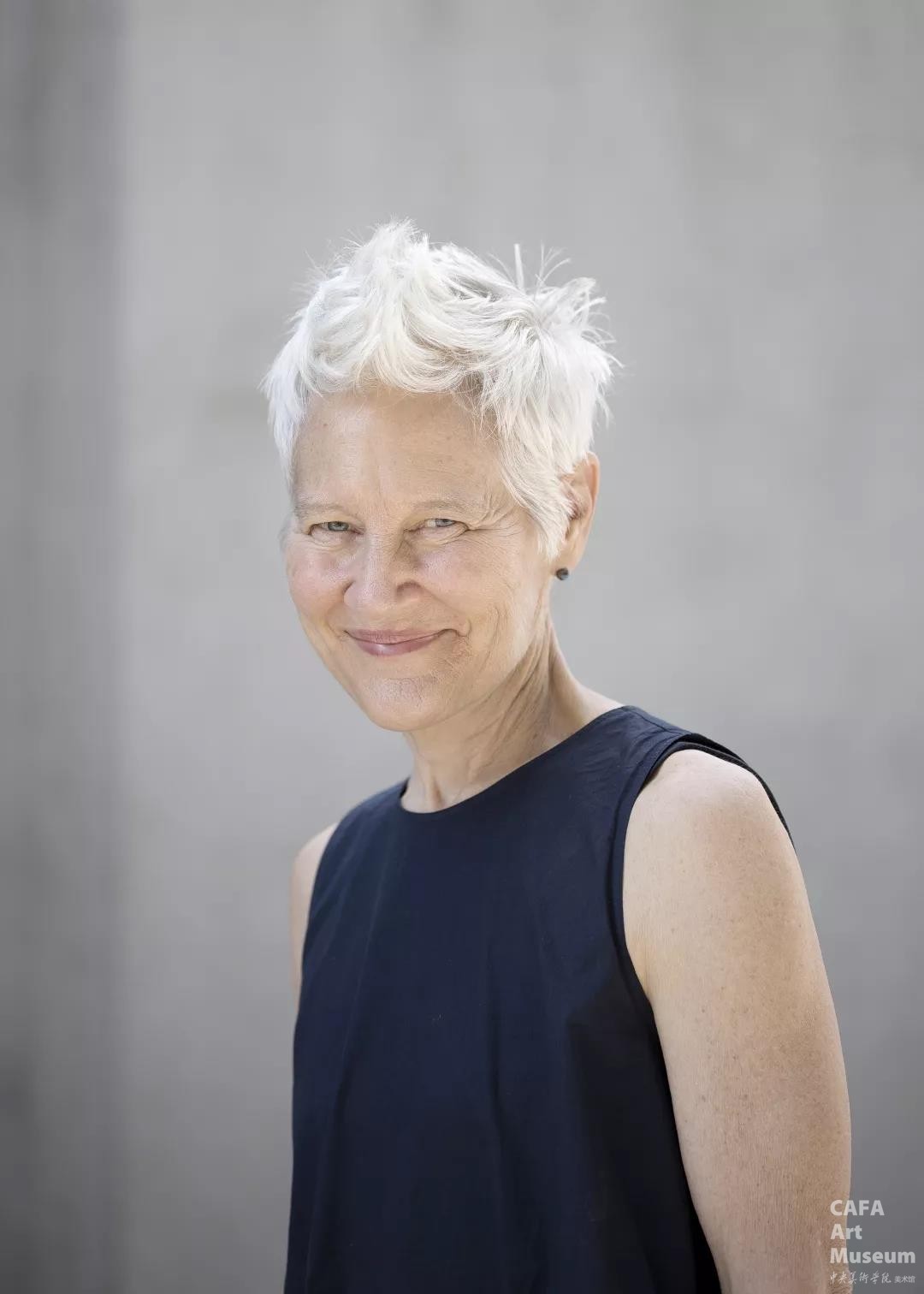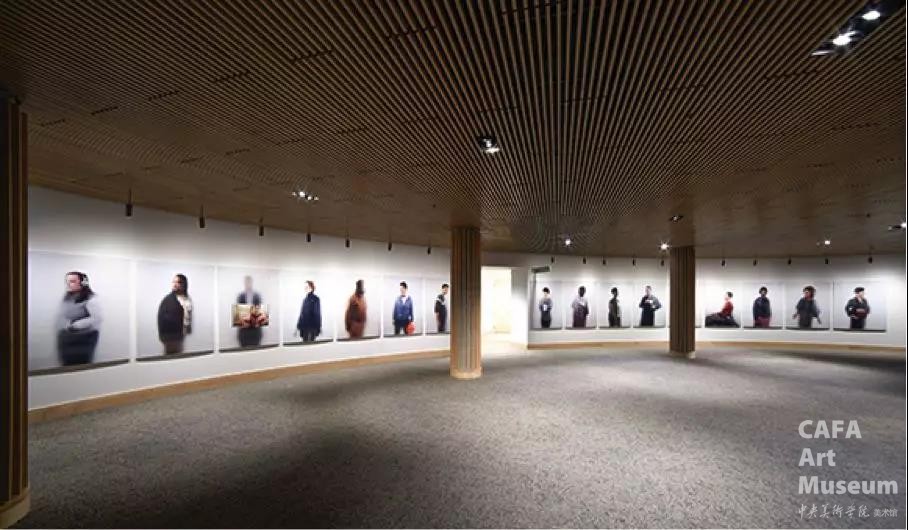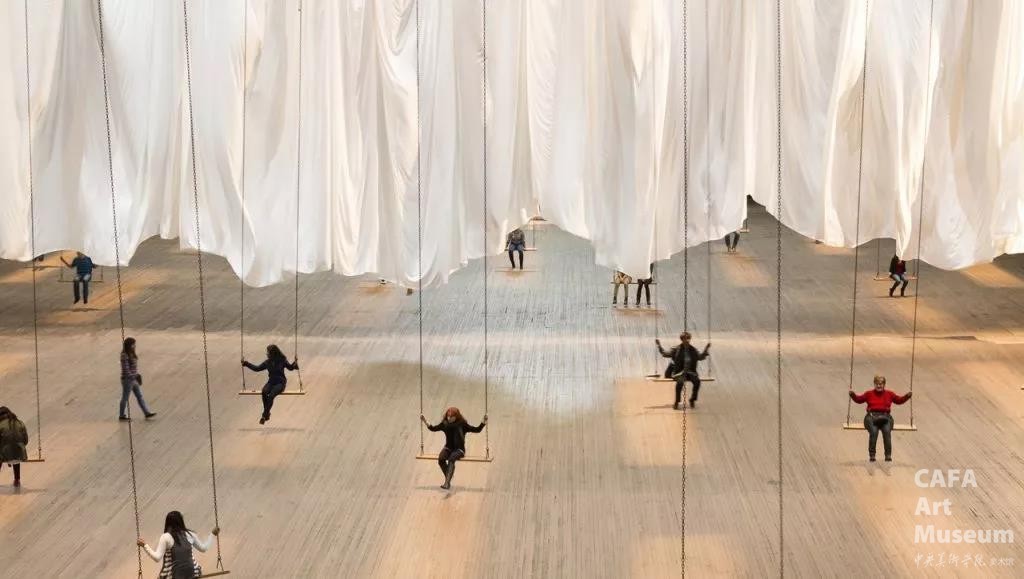

Art Master Lecture Series
MEAT, METAL & CODE:
Alternate Anatomical Architectures
2019/12/11 18:30-20:30
Location
CAFAM Lecture Hall
Academic Presenter
Chen Xiaowen
Professor and Director of Discipline of Art and Technology, School of Design, CAFA
Director of Robot Art Lab, CAFA Visual Art Innovation Institute
Speaker
Stelarc
About the Lecture
The vanished, the dying, the brain-dead, the unborn, the half-born, the bioenhanced microorganism, machine, artificial lives and other living entities, are all sharing certain materials or beings. We, with soft and weak bodies, increasingly experience ourselves in the extended space and through abstract information. We reach virtual space from concrete nanoscale. The body is experiencing half-physical, half-illusory self-being. Compared with other objects, we are becoming increasingly uncertain and elusory, sometimes interrelated and sometimes separated, like illusory bodies or digital noise - as if there's breakdown in terms of biological time. Nonetheless, the human body is embedded in the giant machanic system constructed by artificial perceptions and calculations. What's uncanny is no longer the outdated body pieced up together, but the system that turns the body into illusory being. In the periphery space where prothesis, half-life and artificial life keep proliferating, the body eventually becomes an erratic signifier.
Speaker

Stelarc, Professor of Art and Robotics at Carnegie Mellon University
Renowned biological and robotic performance artist
About the Artist
Stelarc is a performance artist who has visually probed and acoustically amplified his body. He has made three films of the inside of his body. Between 1976-1988 he completed 26 body suspension performances with hooks into the skin. He has used medical instruments, prosthetics, robotics, Virtual Reality systems, the Internet and biotechnology to engineer intimate and involuntary interfaces with the body. He explores Alternate Anatomical Architectures with augmented and extended body constructs.
He has performed with a THIRD HAND, an EXTENDED ARM, a VIRTUAL ARM, a STOMACH SCULPTURE and EXOSKELETON, a 6-legged walking robot. His FRACTAL FLESH, PING BODY and PARASITE performances explored involuntary, remote and internet choreography of the body with electrical stimulation of the muscles. His PROSTHETIC HEAD is an embodied conversational agent that speaks to the person who interrogates it. He is surgically constructing an EXTRA EAR on his arm that will be internet enabled, making it a publicly accessible acoustical organ for people in other places. He is presently performing as his avatar from his SECOND LIFE site.
In 1995 Stelarc received a three year Fellowship from The Visual Arts/Craft Board, The Australia Council and in 2004 was awarded a two year New Media Arts Fellowship. In 1997 he was appointed Honorary Professor of Art and Robotics at Carnegie Mellon University, Pittsburgh. He was Artist-InResidence for Hamburg City in 1997. In 2000 he was awarded an Honorary Degree of Laws by Monash University. He has completed Visiting Artist positions in Art and Technology, at the Faculty of Art and Design at Ohio State University in Columbus in 2002, 2003 & 2004. He has been Principal Research Fellow in the Performance Arts Digital Research Unit and a Visiting Professor at The Nottingham Trent University, UK. Between 2006 and 2011 he was Senior Research Fellow and Visiting Artist at the MARCS Lab, University of Western Sydney, Australia and Chair in Performance Art, School of Arts, Brunel University, Uxbridge, UK. In 2010 he received a special projects grant from the Australia Council and was also awarded the Prix Ars Electronica Hybrid Arts Prize. In 2012 he was the recipient of the Michael Cook Performance and Body Artist Award. In 2014 he initiated and was director of the Alternate Anatomies Lab for two years. In 2015 he received the Australia Council's Emerging and Experimental Arts Award. In 2016 he was awarded an Honorary Doctorate from the Ionian University, Corfu, Greece. He is presently a Distinguished Research Fellow in the School of Design and Art, Curtin University. Stelarc's artwork is represented by the SCOTT LIVESEY GALLERIES in Melbourne.

Works of Stelarc
"Ear on Arm" (1997-2007)

It took a decade to finish the biological artwork "Ear on Arm". Stelarc has always been interested in the soft prothesis made using one's own skin - a permanent modification of the body architecture. The assumption being that if the body was altered it might mean adjusting its awareness. Engineering an alternate anatomical architecture, one that also performs telematically. Certainly what becomes important now is not merely the body's identity, but its connectivity - not its mobility or location, but its interface.

"Extra Ear", 1997

"1/4 Scale Ear", 2003

"Ear on Arm", 2007
The project has unfolded in several ways since 1997. The EXTRA EAR was first imaged as an ear on the side of the head. THE 1/4 SCALE EAR involved growing small replicas of the artist's ear using living cells. And recently, THE EAR ON ARM which began the surgical construction of a full-sized ear on the artist's forearm, one that would transmit the sounds it hears through a miniature microphone that enables a wireless connection to the Internet, making the ear a remote listening device for people in other places.
This project has been about replicating a bodily structure, relocating it and now re-wiring it for alternate functions. It manifests both a desire to deconstruct our evolutionary architecture and to integrate microminiaturized electronics inside the body. We have evolved soft internal organs to better operate and interact with the world. Now we can engineer additional and external organs to better function in the technological and media terrain we now inhabit. It also sees the body as an extended operational system- extruding its awareness and experience.
The body now performs beyond the boundaries of its skin and beyond the local space that it occupies. It can project its physical presence elsewhere. So the notion of single agency is undermined, or at least made more problematic. The body becomes a nexus or a node of collaborating agents that are not simply separated or excluded because of the boundary of our skin, or of having to be in proximity. So we can experience remote bodies, and we can have these remote bodies invading, inhabiting and emanating from the architecture of our bodies, expressed by the movements and sounds prompted by remote agents. What is being generated and experienced is not the biological other - but an excessive technological other, a third other. A remote and phantom presence manifested by a locally situated body. And with the increasing proliferation of haptic devices on the Internet it will be possible to generate more potent phantom presences. These bodily enlightments made "Ear on Arm" Stelarc's most influential and powerful work.
"Third Hand"(1980-1998)

The hand was completed in 1980 in Yokohama. It was based on a prototype developed at Waseda University. It was constructed with the assistance of Imasen in Nagoya. It has been used in performances by the artist between 1980- 1998 in Japan, the USA, Europe and Australia. It has become the best- known and longest-used performance object for the artist. Originally it was designed as a semi- permanent attachment to the body, but because of skin irritation from electrode gel and the weight of the hand, support structure and the battery pack (approx. 2 kgms), it could not be worn continuously and thus it became a special performance device.
The motions of the hand are controlled by the electrical signals of the muscles (EMG), typically from the abdominal and leg muscles for independent movements of the three hands. Simply, signals from muscle contractions are picked up, pre-amplified, rectified and sent to the switching system, enabing activities including pinch-release, grasp-release, 290 degrees wrist rotation (clockwise and counter-clockwise), and a tactile feedback system for a sense of touch.


The Third Hand has come to stand for a body of work that explored intimate interface of technology and prosthetic augmentation- not as a replacement but rather as an addition to the body. A prosthesis not as a sign of lack, but rather a symptom of excess. The Third Hand performances, with amplified body signals and sounds, have contributed to cyborg discourses on the body, included in more recent performances such as FRACTAL FLESH, PING BODY and PARASITE.
"Suspensions"(1976-1988 )

"Seaside Suspension", 1981
"Suspensions" series is one of Stelarc's most famous works. He repeatedly applied hooks into his skin, suspending his body in different positions, in varying locations and diverse situations. "Shaft Suspension" used lift-well to cooperate with body suspension; in "Seaside Suspension", Stelarc was suspended in Jogashima, Miura in Japan, from a wooden structure on an outcrop of rocks parallel to the horizon for approximately 20 minutes. Most of these performances occurred in private gallery spaces or remote locations, with no audience except the group assisting the artist. The two most public performances which attracted large audiences were the Street Suspension in NY over E. 11th street and the City Suspension in Copenhagen.
The suspensions were a body sculpture installed in a space of other objects. Suspended and in stress the anonymous body realises its obsolescence. The anxiety and the uncertainty that accompanies the feeling of being vulnerable. The artist remains silent and stoic, simply showing a body that neither thinks nor expresses emotions. The nude and silent body at least in its static suspensions is an image of suspended animation, appearing in various space and time, neither being able to participate in the present nor able to anticipate the outcome. Performing with neither memory nor expectation. Performing without a past and denying a future. Stelarc discussed involuntariness of the body through these early-stage artworks.

Art Master Lecture Series
The Practice Of Tactile Attentions
2019/12/16 18:30-20:30
Location
CAFAM Lecture Hall
Speaker
Ann Hamilton
Speaker

Ann Hamilton, Artist and Professor in the Department of Art, Ohio State University
About the Artist
Ann Hamilton is a visual artist internationally acclaimed for her large-scale multimedia installations, public projects, and performance collaborations. Her site-responsive process works with common materials to invoke particular places, collective voices, and communities of labor. Noted for a dense accumulation of materials, her ephemeral environments create immersive experiences that poetically respond to the architectural presence and social history of their sites.
Born in Lima, Ohio, in 1956, Ann Hamilton received a BFA in textile design from the University of Kansas in 1979 and an MFA in sculpture from the Yale School of Art in 1985. From 1985 to 1991, she taught on the faculty of the University of California at Santa Barbara. Hamilton has served on the faculty of The Ohio State University since 2001, where she is a Distinguished University Professor in the Department of Art.

Among her many honors, Hamilton has been the recipient of the National Medal of the Arts, Heinz Award, MacArthur Fellowship, United States Artists Fellowship, NEA Visual Arts Fellowship, Louis Comfort Tiffany Foundation Award, Skowhegan Medal for Sculpture, and the Guggenheim Memorial Fellowship.

Works of Ann Hamilton
"O N E E V E R Y O N E"(2012-2017)

In "ONEEVERYONE", Ann Hamilton used a special film - the thermoplastic polyurethane membrane, called Duraflex® and manufactured by Bayer MaterialScience LLC. The optical quality of its milky surface renders only what touches it in focus while obscuring everything else. Such visual effect makes the audience feel that the people in the photos are both close at their fingertips and unreachably far away.
It is part of the Factory Direct: Pittsburgh, the Warhol Museum’s 2012 project linking artists with Pittsburgh-based businesses. Ann Hamilton cooperated with Bayer's researchers, exploring the distance between tactile experience and visual evidence present in many of the company's materials and coatings.

With the Duraflex® suspended as a curtain, Hamilton worked on one side with her camera and an assistant. Employees at Bayer and at the Post Gazette stood on the other side of the membrane and held their hands and work-related objects up to the surface of the film. Standing behind the semi-opaque film, one can hear but can not see, hidden until stepping toward the surface, guided by the artist's voice.

Pittsburgh Post Gazette employee with clipping file envelope(2012)

O N E E V E R Y O N E · Minneapolis(2014)

O N E E V E R Y O N E · St. Louis(2014-2015)

O N E E V E R Y O N E · Seattle(2015)
Watching how the membrane, its conditions of material and circumstance, seemed to transform people and reveal a more private self led to the expansion of the project in other venues.
"the Event of a Thread"(2012)

Ann Hamilton's large-scale installation artwork "the Event of a Thread" was created in the Wade Thompson Drill Hall under the commission of the New York Park Avenue Armory.
The work created a multi-sensory environment with silk, swings, pigeons, desks and chairs, audio materials, loudspeakers and ropes, making exhibition visiting an immersive and dreamy experience through all kinds of senses - visual, auditory and tactile, etc.

The work also involved performers wearing cloaks, who read words from literature on microphones. Their voices can be heard through 42 radioes in portable paper bags.

In the hall, huge white silk was hung from the ceiling, with a field of swings suspended via entangled ropes. As people swang, the swings pulled the ropes, which then dragged the silk fluctuating like white waves, generating breezes that brushed the cheeks of people lying under.
Whether people were watching, walking, chatting or spacing out, they were part of the on-site atmosphere. No actions were abrupt at the site, as non-physical objects like sound, wind and light easily captured the whole space. People gathered together and the work retired backstage - it can be said that the public life and memory themselves are the original intention of the artist.
The whole hall was in motion with people's swing, the waves appeared on the cloth, and the sound generated from the audio device on the floor. The distance between the visitors' swings was also very interesting, as if the complete loneliness was made visible amid the realization that someone else was in the room. It was a tranquil yet exciting mixture of senses.
"myein"(1999)

"myein" is the work Ann Hamilton made for the American pavilion at the 48th Venice Biennale. The word "myein" is an ancient Greek verb meaning to close the eyes or mouth. Linked to the initiation rites enacted in medieval mystery cults, the closing of the eyes or mouth refers to the secret status surrounding their rites. Across time, myein has come to stand for that thing which has not been, or cannot be, explained. Hamilton created the installation myein as a meditation and lamentation on those aspects of American social history that, like weather, are present and pervasive in effect but which remain invisible or unspoken.


Myein is Hamilton's response to the neo-classical architecture of the American pavilion and its associations with Jeffersonian principles of democratic space.


From the rotunda, one could turn right or left into either of two symmetrical wings. There, contrary to the Cartesian grid that describes and maps the exterior image of the pavilion, a chaos of fuchsia powder fell from the perimeter walls of the four interior galleries. With the removal of existing ceilings, sunlight again flooded the interior and the recording of a whispering voice circled round to haunt and fill the space with sound. By insinuating inclusion or exclusion the whispering voice subverted the public character of the space.
